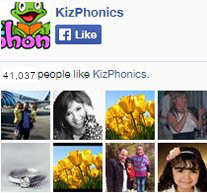Understanding Inflectional Endings in Phonics
Phonics is a foundational aspect of literacy that focuses on the relationships between letters and sounds. An integral part of phonics instruction is understanding "inflectional endings." In this guide, we will delve deep into inflectional endings, understanding their importance, and how they impact pronunciation and meaning.
The Basics of Inflectional Ending
First things first, what is an inflectional ending? An inflectional ending is a group of letters added to the end of a word to convey a specific grammatical function, such as tense, number, or comparison.
For example, adding "-ed" to "jump" (as in "jumped") indicates past tense. Similarly, attaching "-s" to "cat" makes it "cats," implying more than one cat. It's essential to note that inflectional endings don't create new words but rather modify the existing word's form.
Why Inflectional Endings Matter in Phonics
In phonics, the pronunciation of a word is crucial. Inflectional endings can change the way a word sounds, thus influencing how it's read and understood. For instance, the inflectional ending "-s" can sound like "z" in "dogs" but "s" in "cats." Recognizing these patterns helps children read more fluently and understand the context better.
Moreover, inflectional endings can also assist in building vocabulary and comprehension skills. By identifying the base word and its inflectional ending, children can discern meaning and usage more efficiently.
Common Inflectional Endings in English
-s & -es: These are used to indicate plurals. E.g., cat (singular) and cats (plural), bus and buses.
-ed: Typically denotes the past tense. E.g., jump and jumped.
-ing: Indicates ongoing action or present tense. E.g., run and running.
-er & -est: Used for comparisons. E.g., big, bigger, and biggest.
While these are the more common inflectional endings, it's essential to remember that some words might have irregular forms that don't follow the usual patterns.
Inflectional Endings: Not "Inflectional Endings s"
A common mistake some individuals make is referring to inflectional endings as "inflectional endings s." This terminology is inaccurate. "Inflectional endings" in itself encapsulates all the various endings, and appending an "s" is unnecessary. Teaching children the correct terminology from the outset ensures clarity and precision in their phonics journey.
Tips for Teaching Inflectional Endings
Start with Regular Patterns: Introduce children to regular words that follow predictable patterns, such as "jump" and "jumped" or "play" and "played."
Use Visual Aids: Flashcards or charts displaying base words alongside their inflected forms can be handy.
Incorporate Games: Engage children with games that require them to match base words with their inflected forms.
Practice with Reading: Encourage reading practices where children can spot and pronounce words with inflectional endings in context.
For more comprehensive phonics resources, you might want to visit kizphonics, which offers a range of helpful tools and articles.
Fact Section: FAQs
Q: What is the primary purpose of inflectional endings?
A: Inflectional endings modify the form of a word to convey specific grammatical functions like tense, number, or comparison.
Q: How do inflectional endings impact phonics?
A: They can change the pronunciation of a word, which in turn influences how it's read and comprehended.
Q: Are inflectional endings the same as prefixes?
A: No, while prefixes are added to the beginning of a word, inflectional endings are added to the end.
Q: How many primary inflectional endings are there in English?
A: English primarily uses four inflectional endings: -s, -ed, -ing, and -er/-est. However, there are some variations and irregularities.
In conclusion, inflectional endings play a pivotal role in phonics instruction. Understanding and mastering them can greatly improve reading skills and comprehension for young learners. Always remember, the journey of phonics is about consistent practice and exploration, and with the right tools and knowledge, every child can excel.










